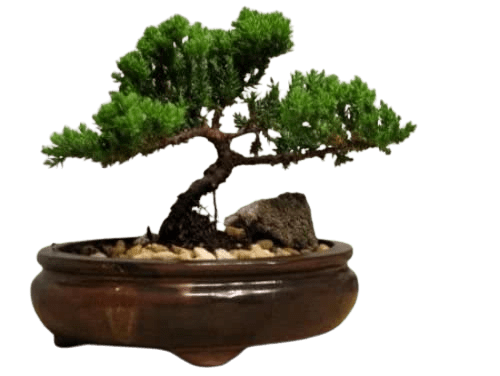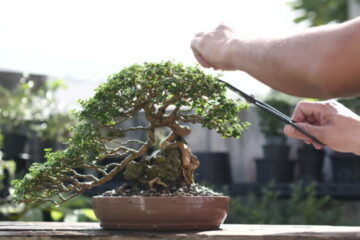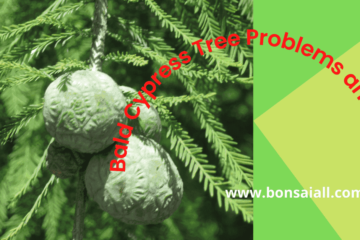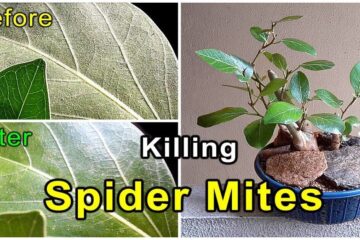The ancient practice of bonsai lifts pruning from an art form. Pruning techniques for bonsai not only reduce the size of the plant but strive to mimic the natural forms of trees that grew in the harsh, mountainous regions where bonsai originated.
Bonsai researchers invent different shapes and styles to reassemble the branches to bring a profitable view of the plant. They leave all styles open to personal practice to showcase the creativity of the bonsai gardener.
There are a few basic styles of bonsai trimming, and one of the most popular styles is the cascade bonsai. But, you need to acquire some knowledge to understand its cultivation, formation and maintenance methods.
We have researched the cascade bonsai style and here we will discuss a general guide about it. So, you can easily bring this style to your bonsai tree. Let’s get to the point.
Detailed discussion about cascade bonsai tree
Content Overview
Naturally, Cascade Bonsai originates from the mountains, harsh terrain and climate. Even this style of trimming helps reduce its size and mimic its natural contours.
What is Cascade Bonsai?
The main theme of cascading bonsai plants is to create a form where the branches are trunked and curved both downward and upward. So that it looks like the snow is rushing towards the sun. “Kengai Bonsai” is the Japanese name for cascade bonsai.
Which Bonsai Species Are Eligible To Create Cascade Style?
You will be surprised to know that there are more than 50 species of bonsai trees available. And all these species are cultivated all over the world. Then you understand how big the culture is!
But, not all of these 50+ species of bonsai are the right choice for cascade bonsai. Some common bonsai trees are ideal for this. such as
1. Chinese juniper
Credit : Amazon.com
The scientific name of Chinese juniper is “Juniperus chinensis“. It is a plant in the genus Cupressaceae of the cypress family and is primarily found in China, Korea, Japan, Myanmar and some far eastern regions of Russia. It will be 1-20 meters long, and every year it will grow 1-2 feet and get its unique appearance.
2. Green Mound Juniper
Green Mound Juniper is an evergreen tree known as “Garden Juniper”. It is basically a shrubby ground cover tree. Its length will be 8-18″, but sometimes it will go up to 24”. However, it spreads its leaves and branches 10-15′ wide, parallel and slightly above the ground.
3. Japanese Black Pine
“Pinus Thunbergii” is the scientific name of Japanese black pine, and is commonly known as Japanese pine or pine tree. However, in Korea, it is called ‘glomsol’; In China, called “Heisong”; And in Japan it is called “Kuromatsu”. It is 25 feet tall, 20-30 feet wide and has dark green leaves. This plant can withstand temperatures up to 100°F and needs sunlight to grow.
4. Japanese Garden Juniper
Japanese garden juniper is a low growing plant with ground hugging and evergreen leaves. It will be 6-12 inches high and 4-6 feet wide. It looks beautiful and unique when it covers the ground with its green and cascading leaves. However, in winter, the blue and green leaves will turn purple.
5. Japanese white pine
The scientific name of Japanese white pine is “Pinus parviflora”. It is also called Ulengdo white pine or five-needle pine. It is a white pine group of plants native to Japan and Korea. It is a slow growing bonsai species that can take up to 10 years to reach maximum growth. It will be about 20 to 40 feet long and 10 to 20 feet wide.
6. Mountain pine
Mountain pine grows naturally in the mountainous regions of Western Europe. Its scientific name is “Pinus Uncinata” and it is a small conifer bonsai tree. It will grow 1-2 feet a year with proper maintenance and care.
7. Needle juniper
Needle juniper is a plant that commonly grows in northern China, Japan, Korea, Mongolia and Russia. It will be about 10-20 meters tall. However, in recent years, this cascade juniper bonsai has also been grown in the United States.
8. Scotch pine
The final species of tree for cascade bonsai styling is the Scotch pine. It will usually be 40 to 50 feet long and 30 feet wide. In summer, their needles appear blue-green and 1-2″ long. But in winter, the leaves change their color and turn yellow-green.
Types of Cascade Bonsai
There are two types of bonsai cascade. One is full cascade, and the other is semi cascade.
- Full Cascade Bonsai
When you have a full cascading view of your plant, it is called full cascade bonsai.
- Semi Cascade Bonsai
In semi-cascade bonsai, a special shape focuses on bringing out this aspect like vertical rock energy.
How to bring cascade style to your bonsai?

Creating a natural-looking cascade is not difficult, but you need to follow a step-by-step process to get the cascade shape. Here is a complete guide to the process
Step 1 : Identify the branch to prune
Many branches of the tree. Some branches are strong and thick, while others are weak and thin. First, you need to decide which branches to prune to get the cascade look of your tree.
Step 2: Prune unnecessary branches
Choose a bonsai trimming clippers and scissors all weak branches. Bonsai experts recommend pruning small branches that grow from the trunk. As a result, you will have room to wire strong branches.
Step 3: Wire the branches
Next, choose a relatively thick wire compared to the branches you want to wrap. It would be better to wrap the branches 75% of the trunk from the base to protect it.
When wiring the branch, do not wrap it too tightly as excess force will damage the quality of the branch and limit its growth.check out article about how to wire a bonsai tree.
Step 4: Wrap the raffia
After the wire, you can wrap the wire branches and trunk with raffia. Thus, branching will be flexible to move and grow.
Step 5: Bend the branches
Finally, it’s time to bend the trunk to create a cascade shape. But, before bending, you need to imagine how you want your tree to look. Since you want to imitate nature rather than modern art, you need to push the trunk down. Bend the branch down and then up. Hence it creates a hill shape which is the main criterion of cascade bonsai.
This is the easiest way to develop and adjust the cascade bonsai shape. Follow the steps for all trellises to ensure your tree looks great.
Repotting
Hey, bonsai lovers, this is not the end of your cascade bonsai. After wiring and bending all the branches, you need to restore the tree and for this you need to prepare the soil and pot.
You need to prepare the soil based on your plant species. In general, you can choose soil, compost manure and gravel chips to restore the plant.
- First, choose a container with a hole to ensure a proper drainage system.
- Next, Place a mesh in the hole and pour the gravel chips into the container.
- After that, Pour two handfuls of soil and spread it evenly in the pot.
- Carefully remove the plant from the old pot and place it in the new pot.
- Gently loosen some topsoil from the plant and spread it evenly under the plant.
- Finally, pour in some new soil to cover the plant’s roots. Then add water and place the pot in a place to decorate.
Some useful tips
- You will need to water and fertilize your bonsai as needed to maintain proper growth.
- For cascading bonsai try to prune the tree 3 to 4 times a year.
- Prune the roots and repot the plant every 2-3 years from spring to summer.
Training Cascade Bonsai
Training is an essential part of teaching bonsai to grow in the cascade style. You have to learn to get comfortable with the process, because you’ll be using it a lot.
If you have a tree that you particularly prize, you may want to buy an inexpensive seedling to practice with first.
You can buy a juniper seedling for a few dollars, and not only can you use it for wiring practice, but it’s also useful for experimenting with pruning and repotting before doing it with the real deal. You may even love your practice plant enough to continue training it as a bonsai.
For a bonsai wire, you will need flexible wire such as aluminum or copper. You also need natural, undyed raffia, although this is optional.
If you really bend the trunk a lot, you may want to invest in a branch bender. It will make your work much easier.
Amazon carries a medium-sized bender, which is ideal for most projects.
Do not use tape instead of raffia. If you want to protect the branch from wire damage, raffia is your best option. This provides some extra support to keep the trunk in place.
Soak the raffia in water for 30 minutes and then take a small handful. Whisk to remove excess water. Wind it tightly around the branch you are training on. You want the raffia to be fairly thick, so use at least a few layers.
Now, whether you use raffia or not, wrap the wire around the branch to hold it in your desired shape. Add the bran bender at this point following the instructions given on the packaging.
The raffia will dry on the branch, providing additional support to your chosen shape and protecting the trunk from wire. It also helps retain moisture, so the branch doesn’t crack under bending stress.
However, you must remove the raffia after a few months as it inhibits photosynthesis where it has been applied.
You also need to check the wires and rewire each time to prevent the branch from growing into the wires. For a young deciduous tree, this may mean checking every few weeks.
For an older evergreen, you can leave the wire in place for up to a year.
When it comes time to remove the wire, carefully snip it using a pair of wire snips. Undoing the wire tension causes more stress and damage to the tree.
Read More : How to Repot a Bonsai for Beginners Complete Solutions
A Natural Alternative
Some people choose to encourage a bonsai to grow in a cascade bonsai style using a more natural approach. To do this, you turn the pot on its side and allow the plant stem to grow sideways towards the light.
This only works well if your soil is packed enough that it won’t fall over when it turns on its side, and you must anchor the root ball.
You need to straighten the tree straight into the water and then turn it back on its side.
After you get the kind of bend you want in the trunk, you can put it back in an upright position and start training it with the wire.
Bonsai Cascade and Living Art
Although they’re not for beginners, well-done cascade bonsai are works of living art .Their graceful, arched shape takes years to perfect, but it’s worth the effort.
Conclusion
Bonsai is a rich culture of growing plants in small sizes, shapes and spaces. But the different style makes it lively for tree lovers. Cascade bonsai is one of them, and developing this style is a great way to grow plants.
But, if you don’t know the right process and steps, you can harm your plant instead of health. So, we suggest you to know the process first and then practice.
Hopefully, our discussion will help you on your bonsai growing journey. If you have any query about bonsai, let us know by hitting our comment section. We would like to write about your question in our next post.




